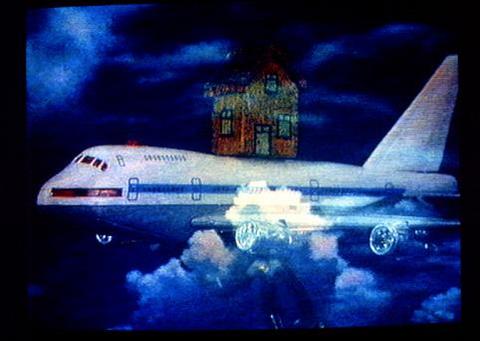 still
from "DIAL H.I.S.T.O.R.Y." 1998, 50 min
still
from "DIAL H.I.S.T.O.R.Y." 1998, 50 min
|
Johan Grimonprez's work takes a close look at television's and generally the mass-media's perverse mechanisms and ways of functioning, the confusing treatment of information, the dangerous merging of news items, advertising and fiction. His film Dial H.I.S.T.O.R.Y., produced in 1997, traces the history of airplane hijackings. The film, made up of historical documentary footage and autobiographical sequences, to which Grimonprez adds personal critiques and excerpts from texts by Don De Lillo, mixes the facts and images, "hijacking" them in turn. This initial analysis of the collusion between history and its representation by television gave rise to a whole series of projects and thoughts linked to such phenomena as hijacking, terrorism, "hactivism" and entartage (the practice of tossing a cream pie in the face of some public figure to make a political point). These were collected in a magazine that Grimonprez called Inflight (2000), a piece that offers, for example, numerous cynical tips on how to steal a Boeing 777, resist kidnappers, or become famous in a life-or-death situation. Not surprisingly, Grimonprez's research has had greater resonance following the events of September 2001. It points out the culture of catastrophe that is invading our living rooms and castigates viewers who identify at one and the same time with the victims and the hijackers, heroes who, both lauded and loathed, represent a form of liberty and independence. Grimonprez is currently at work on Zunk, a new and ambitious film that questions the melding of news and advertising. Aurélie Voltz |